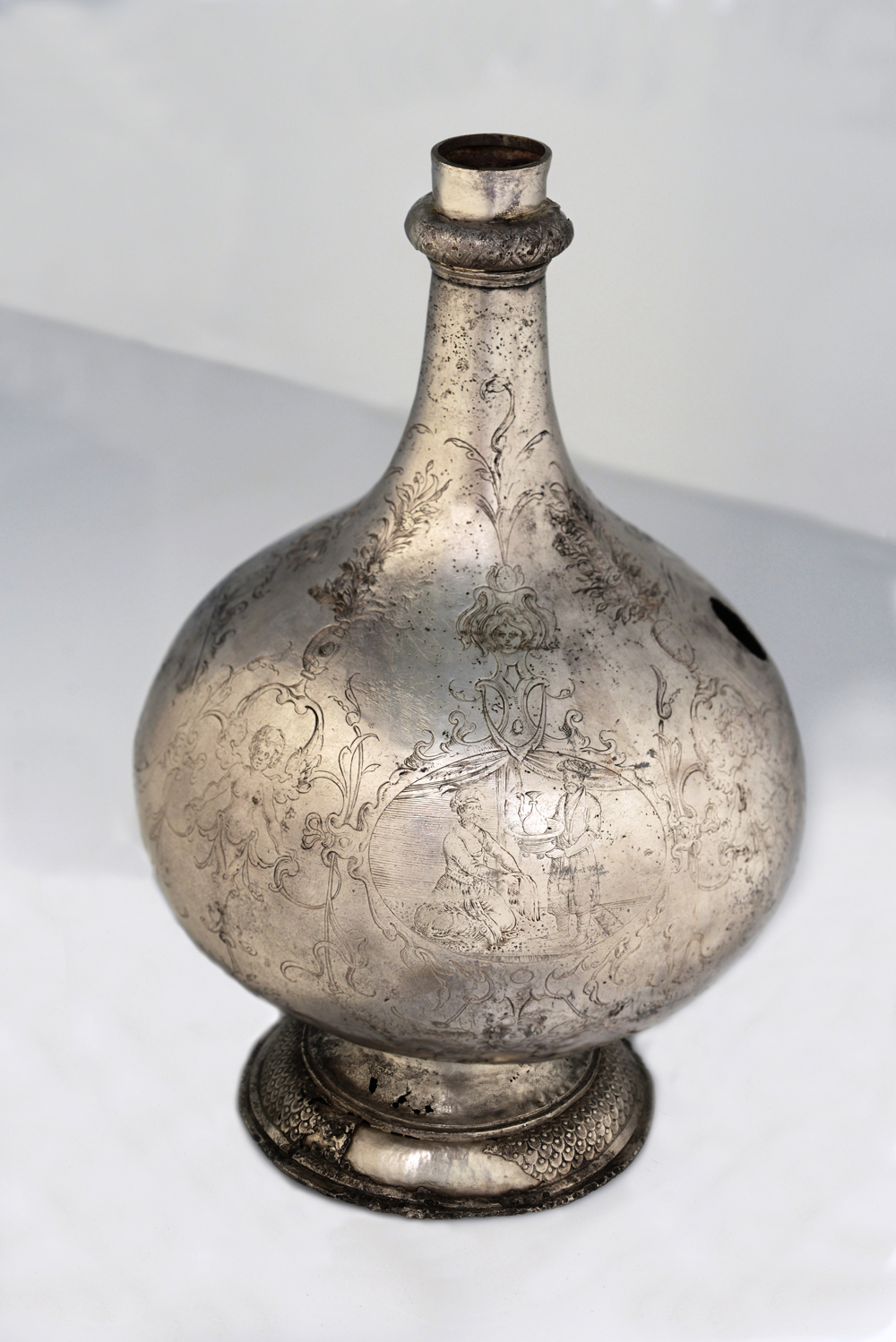Stop 5.1 - Batavia Silver: Silver Ewer
Abraham van der Plaetsen(?), Ewer, 1628, silver, Western Australia Museum, Perth, BAT3035.
This ewer was part of the trade silver that Commander Francisco Pelsaert had brought on board the Batavia. When the Batavia was shipwrecked off the coast of Western Australia on the morning of 4 June 1629, the Commander was as eager to recover the numerous chests filled with silver, gold and jewels from the sea, as he was to rescue the survivors of the shipwreck. Ironically, there is no trace left of the gold and silverware that was saved from the ship by Pelsaert and only the treasures that were left behind in the wreck have survived the test of time.
Much to the disappointment of the Dutch East India Company, the silver and gold goods produced in Amsterdam did not prove to be popular in India. While the Company had hoped to sell these items at a 50% profit, in reality they turned out to be difficult to sell at all.
One of the cartouches on this silver ewer displays the hand washing ceremony for which this pitcher was meant to be used. According to an English ambassador to the Mughal court the locals are “very superstitious and washe there hands whensoever they goe to their worship”. Pelsaert himself was more accurate in his observations and noted that Muslims washed their hands prior to eating. What he forgot to tell the Amsterdam silversmith though was that Mughal craftsman avoided the representation of human figures and normally decorated their ewers with ornaments of plants or animals. No wonder the Mughal were not interested in buying the Dutch silverware because it would have had no place in their ceremonies.


- Next Stop
-

Stop 6 - Vanitas Still Life
next